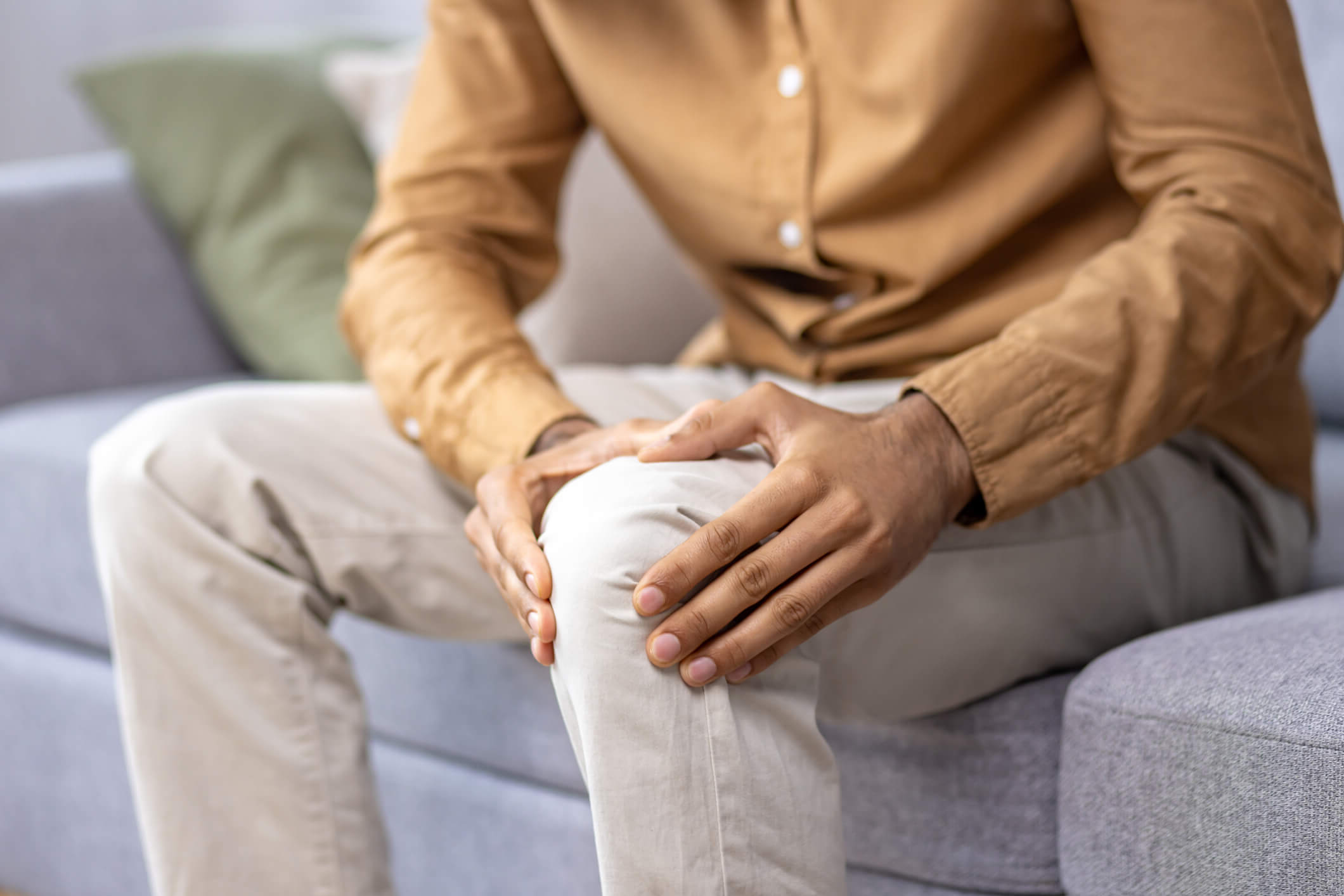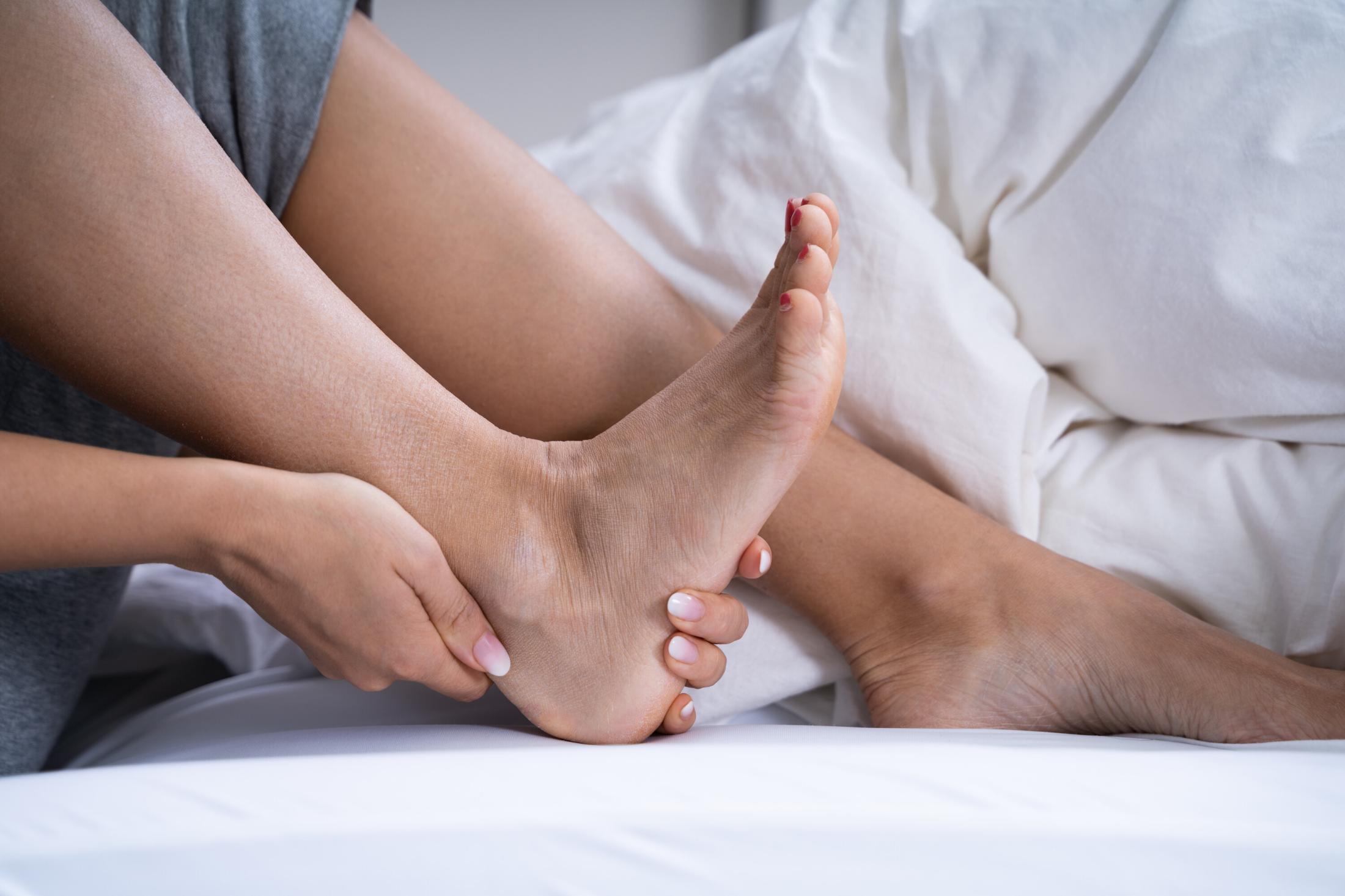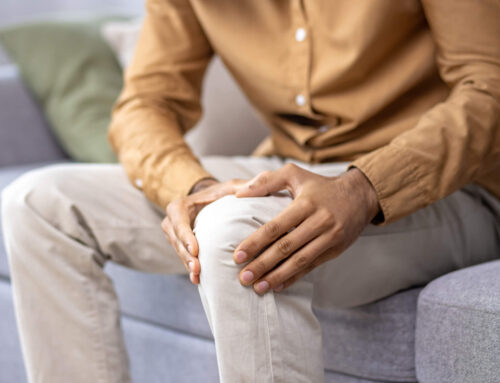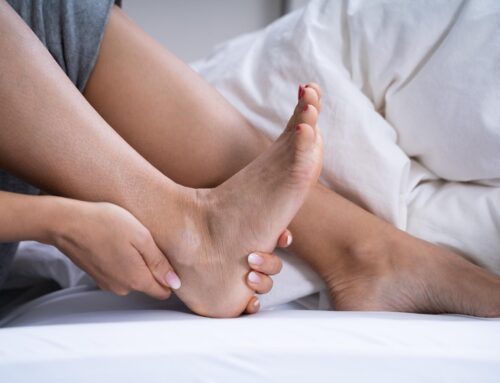Knee pain can sneak up on you for all kinds of reasons. Sometimes it’s arthritis slowly wearing on the joint, other times it’s tendonitis from pushing your knees a little too hard, or bursitis when irritation causes swelling. The source may change, but the result feels the same, discomfort that can turn everyday things like walking, climbing stairs, or kneeling into a real challenge.
Common Causes of Knee Pain
Knee pain can come from several different conditions, each with its own patterns and triggers. Knowing whether you’re dealing with arthritis, tendonitis, or bursitis helps you recognize what’s happening in your body and points you toward the kind of support that will help the most.
Arthritis
Arthritis is one of the most common sources of knee pain, especially as we age. It happens when the protective cartilage in the joint starts to wear down, leading to stiffness, swelling, and a heavy, achy feeling. Many people notice that their knee feels harder to move after sitting for a while, or that everyday activities like climbing stairs leave them sore.
Because arthritis often causes ongoing inflammation, compression sleeves and braces can help by improving circulation, adding warmth, and giving the joint a little extra support during movement.
Tendonitis
Tendonitis occurs when the tendons around the knee, the strong bands that connect muscle to bone, become irritated or inflamed. It’s usually the result of overuse, repetitive movement, or sudden increases in activity. For cyclists, runners, or anyone who spends time squatting or climbing stairs, this condition often shows up as sharp pain and swelling during activity.
Lightweight braces or straps can ease strain on the tendon, while sleeves help with swelling and circulation. For more stubborn tendonitis, a functional brace that stabilizes the knee can make a big difference.
Bursitis
Bursitis happens when the small fluid-filled sacs (bursae) that cushion the knee become irritated. Different bursae can be affected depending on your activity:
- Prepatellar bursitis (“housemaid’s knee”) often comes from frequent kneeling and affects the front of the knee.
- Pes anserine bursitis develops along the inside of the knee, commonly from repetitive motion like running or climbing.
Whether it’s from prolonged pressure, repetitive strain, or a direct bump to the knee, bursitis often causes swelling and tenderness that make kneeling or bending uncomfortable. The right support from a compression sleeve to a stabilizing brace can relieve pressure on the irritated bursa and give it time to heal.
Choosing the Right Support
Finding the right knee support can change how you move through your day. A sleeve or brace can ease pain, reduce swelling, and give your knee the stability it needs to heal and stay active.
Knee Sleeves for Light, Flexible Relief
Knee sleeves are a great starting point for many people. They’re lightweight, easy to wear under clothing, and provide gentle compression that:
- Improves circulation
- Helps reduce swelling
- Adds a touch of warmth to keep the joint moving more comfortably
Sleeves are often a good choice if you’re dealing with mild arthritis, tendonitis, or bursitis and want relief without feeling restricted. They’re especially helpful for everyday activities like walking, light exercise, or climbing stairs.
Functional Braces for Extra Stability
When pain or instability starts interfering with your routine, a functional brace may be a better fit. Unlike sleeves, these braces are designed to:
- Offload pressure from sore or inflamed areas
- Keep the knee properly aligned
- Provide added stability on uneven ground or during more demanding activities
Functional braces are especially useful if you feel your knee “gives out” or if tasks like hiking, squatting, or even long walks are becoming difficult.
When to See a Professional
Not every brace off the shelf will do the job, in fact, the wrong fit can sometimes make things worse. It may be time to book a professional fitting if you notice:
- Pain that keeps coming back
- Swelling that doesn’t improve with rest
- Instability that makes you nervous about walking or exercising
- Store-bought braces that just don’t feel right or fail to relieve symptoms
A professional fitting ensures you’re not only getting the right style of support, but also the right size and level of stability for your specific condition. That way, you can protect your joint, feel more confident, and stay active without adding unnecessary strain.
Support for Walking, Hiking, and Everyday Activities
Knee pain isn’t just something athletes deal with, it can sneak into the simple, everyday routines that matter most. The right support can help you keep moving with less pain.
Walking the Dog or Climbing Stairs
For lighter activities where you’re moving steadily but don’t need heavy-duty stability, a light compression sleeve is usually enough. It provides:
- Gentle support to ease pressure on the joint
- Improved circulation to reduce swelling
- A flexible fit that won’t restrict your stride
This makes sleeves a great option for daily walks, quick errands, or those tricky flights of stairs that feel tougher when your knee is sore.
Gardening, Housework, or Squatting
When you’re bending, kneeling, or putting direct pressure on your knees, the strain can add up. A low-profile brace or strap can:
- Target support where you need it most
- Stabilize the joint during repetitive movements
- Help reduce pain that comes from kneeling or squatting
These slimmer braces are comfortable enough to wear while doing chores or working in the garden without feeling bulky.
Hiking or Uneven Terrain
Heading out on a trail or walking across uneven ground can push your knees in unpredictable ways. A hinged or stabilizing brace gives you that extra security by:
- Keeping the joint properly aligned
- Offering stability on inclines and declines
- Reducing the risk of slips, twists, or strains
If you love hiking or spend a lot of time outdoors, this type of brace can make the difference between powering through and having to cut your activity short.
Everyday Long Wear
Sometimes you just need steady support that lasts all day without being noticeable. A comfortable sleeve with breathable fabric works well here, offering:
- Light compression for swelling
- Continuous, low-level support
- Materials that stay cool and comfortable for hours
Perfect for anyone who’s on their feet for long stretches, whether at work, running errands, or just going about daily life.
Pairing Supports with Self-Care
Braces and sleeves help with easing knee pain, they work best when combined with simple self-care strategies. Taking a few extra steps at home can help calm irritation, speed up healing, and prevent flare-ups down the road.
A tried-and-true approach is RICE: Rest, Ice, Compression, and Elevation. Resting the joint gives it a break from repetitive strain, while ice helps bring down swelling and inflammation. Compression through a sleeve or bandage supports circulation and reduces fluid buildup, and elevating the leg encourages swelling to drain more effectively. These simple steps can make a noticeable difference, especially during painful flare-ups.
Along with rest and recovery, gentle strengthening and stretching exercises help the knee regain stability and flexibility over time. Movements like wall squats, straight leg raises, or resisted side-steps can build supporting muscles, while light stretches improve mobility. When done properly, and ideally under guidance from a professional, these exercises can reduce the stress placed on the knee and help prevent the same issues from coming back.
When to Get Professional Help
There’s nothing wrong with trying basic knee supports, and for many people they do bring some relief. But if swelling doesn’t settle down, the pain keeps coming back, or your knee still feels unstable no matter what you wear, it may be time to take the next step. Store-bought braces can only do so much, and when they don’t fit quite right, they often end up causing more frustration than comfort.
At Care-Med, we take the time to understand your specific condition, whether it’s arthritis, tendonitis, or bursitis, and match you with the kind of support that actually works for your body and your lifestyle. A proper fit means better stability, real pain relief, and the confidence to keep moving.
Finding the Right Fit for You
Knee pain doesn’t have to slow you down. A brace or sleeve that fits well gives your joint the stability it needs while helping you stay active in the moments that matter most, from simple walks to weekend adventures.
If you’ve been struggling to find something that truly works, a professional fitting can be the turning point. At Care-Med, our goal is to help you move with less pain, more confidence, and the peace of mind that your knees are being cared for properly. Sometimes the smallest adjustment in support is what makes the biggest difference in how you feel every day.
Ready to find the right support for your knees? Book an appointment or call Care-Med at 416-782-5353 to schedule your fitting today.
Share This Story, Choose Your Platform!
Table of Contents
We specialize in orthotics, body braces, and compression wear tailored to your unique needs in Toronto. Reach out to us at info@caremed.care or call 416-782-5353 to book your fitting and consultation.
Experience the difference of customized solutions designed just for you.











